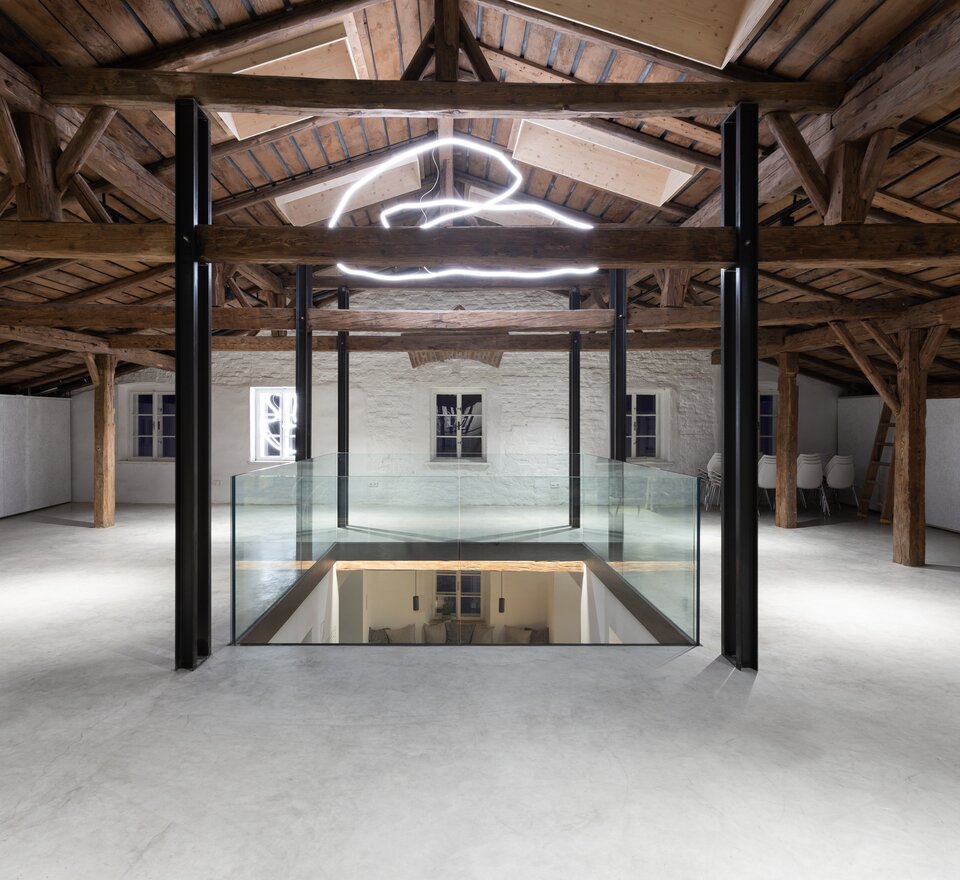When it comes to designing offices, revitalising existing buildings is a sustainable alternative to new builds. But can a modern New Work concept even fit within four old walls? We spoke to office consultancy firm Roomware to find out.
A New Work office: what are the requirements?
New Work essentially brings three aspects – people, space, technology – together in a single context. The focus is on people, but at the same time there is a tension here between management, organisation and company culture. “The idea is to create the ideal conditions for working together. In doing so, it’s important to strike a balance between organisational demands, and stakeholder needs and ways of working,” says Bernhard Kern, CEO of Roomware Consulting, of the challenge. The focus on collaboration and the need for different ways of working produces lots of new workspaces and types of office, including co-working landscapes, silent rooms or creative spaces. “In a modern office, companies are providing employees with differentiated, varied work environments that create the right setting to support different tasks. It’s all about activity-based working,” explains Kern.
The office concept of today meets the architecture of yesterday.
The design and concept of these New Work office landscapes is characterised by bright, open spaces, modern tech and contemporary interiors. All attributes which are easy to accommodate in a classic new build. But what if you want to revitalise existing buildings and turn them into New Work offices? “From a structural point of view, you might be limited by things like small room layouts, low ceilings or small windows. Integrating IT and A/C into existing structures can also take a fair amount of effort. Not to mention the poor acoustic conditions you will often encounter. This frequently poses an obstacle to modern, open-plan concepts and the costs to renovate are significant,” explains Bernhard Kern.
Achieving the flexibility and modularity of workspaces that is so typical of New Work can also prove a challenge when working with older layouts: “Most of it can essentially be done by making structural adaptations – unless you’re working in a listed building, of course – but it has to be factored into the budget,” emphasises the workspace expert.
Despite the difficulties old buildings often pose at the start of a project, revitalisation not only creates environmental added value, it also allows offices to be created in central or well-connected locations. “If the office is located in a good spot, that can have a really positive impact on the way people work – a vibrant city centre, an inspiring creative district, or even a quiet, secluded spot can all stimulate imagination, efficiency and focus, depending on your workflow and your requirements,” explains Kern.
There are also unique advantages when it comes to design: “The appeal of older buildings is often their unique historic charm which creates identity and allows for a distinct, individual interior which eschews the mainstream,” emphasises Roomware Consulting interior designer, Andrea Schneider.
Adapting to existing structures requires a great deal of sensitivity and creativity during planning: “Sometimes, existing floor plans open up entirely new design possibilities that you might never have thought of otherwise,” adds Schneider.
Bernhard Kern is convinced that New Work concepts can be realised in existing properties: “Anyone who’s all about New Work-style office culture has to be looking forwards and thinking sustainably. The office is becoming a place of dialogue and communication. The classic workplace is becoming less and less relevant. Existing spaces have to be reimagined. Revitalising buildings for New Work is a challenge. But it’s also a valuable investment in the future.”

